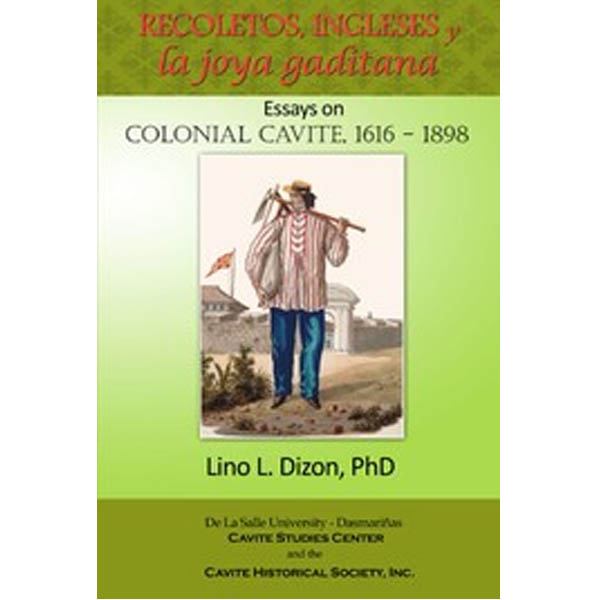The three-year British occupation of Manila (1762-1764) had extensive repercussions on the Chinese community. No doubt, the almost complete expulsion of the Chinese in the Philippines by the Spanish colonial regime was a retaliation for their sympathy with the British.
In Essays in Colonial Cavite, 1616-1898, Recoletos Ingleses y la joyagaditana (De La Salle University-Dasmariñas, Cavite Studies Center and Cavite Historical Society, 2013), Lino L. Dizon, Ph.D., details in the section “Despises: The British Occupation of Cavite and its Aftermath” how the Chinese in Cavite suffered from the aftermath of the occupation. This vignette is seldom known or mentioned in works on the history of the Chinese in the Philippines.
Dizon writes:
“Though the Occupation by itself was no more than a sojourn, or short, setting back to the usual conditions was not for both the warring parties, i.e. the Spaniards and the British. Cavite, for one, being the point of disembarkation, was in frenzy, with the Englishmen rushing with their belongings – looted treasures, baggage, dependents and collaborators. The last included the Sepoys and the Chinese. Then there was the Chinese. Since there was a shortage of ships to transport even the British troops, in India,”Salvador P. Escoto points out, “a large number of Chinese assembled a flotilla of small boats off Cavite on April 16 <1764> and embarked for Mariveles, when Alexander Dalrymple, the provisional governor of Manila, promised them transportation.
“Dalrymple was able to accommodate them aboard sampans sequestered from Chinese traders. Some unlucky refugees, however, were shipwrecked and were forced to land on Spanish-controlled territories. In desperation, they killed themselves by plunging back into the sea and drowned rather than be taken back to Manila. It is most probable that a big number of Chinese who were not able to leave the Philippines decided to hide in Cavite and its environs. In 1767, three years after the Occupation, when there was an expulsion of the Chinese in retaliation for their sympathy with the British, Jose Farando, the castellan and alcalde-mayor of Cavite, was among the first to make a report to Gov. Gen. Jose Raon.
“In his letter to Raon on Nov. 20 that year, the castellan informed the governor that there were 40 bachelors and 40 married sangleyes in Cavite. ‘He could send the bachelors more quickly after giving them enough time to attend to their personal affairs,’ he said, though ‘it would take more time for the married since some of the wives and children were sick.’ With the order, Farando ‘also asked what he should do with the skilled iron workers and contractors who provided the port town with supplies of meat and wine. After receiving Governor Raon’s order, Farando waited until the sick members of the families recovered before sending them to Manila. As to the iron workers and the suppliers of meat and wine, they were also sent to the capital after replacements were found through public bidding.’ With the official implementation of the expulsion of the Chinese in December of 1772, the biggest number of Chinese expelled after that of Tondo (Manila) was from Cavite, with 147, including five incapacitated and two dead.”
But this is not yet the whole story of Chinese expulsion in Cavite.
Dizon continues, “An author, writing during the initial decade of American Occupation, observed that there was a lot of Chinese blood in Cavite, William Boyce, the author in 1914, continues in his observation that every other face seems to have a Mongolian cast. For centuries, Chinamen have been marrying native women and the isolation of the place has tended to preserve the type. This is only to prove that the British occupation might have enervated the Chinese presence in the province but not totally” (pp. 100-102).
Dizon might be right that “British occupation might have enervated the Chinese presence in the province <of Cavite> but not totally.” But we also have to take into consideration that the Chinese were allowed to come to the Philippines in the 19th century, some of them definitely went to Cavite, and a lot of Chinese mestizos in Cavite carried on their supposed “Mongolian cast” that could make Boyce feel strongly that “there is a lot of Chinese blood in Cavite.”
Historically, the Chinese in the Philippines had suffered many misfortunes and miseries, including mass massacres and mass expulsions, not to mention discrimination, prejudices and persecutions.
But as the experience of the aftermath of the British Occupation of the Chinese in Cavite demonstrates, the Chinese not only survived but also integrated well into the mainstream of Philippine society and became an integral part that no one was able to separate them from it.
The integration was so well-knit that majority of them were being identified as Filipino by others as well as themselves.
Categories
Death and expulsion: The Chinese in Cavite
